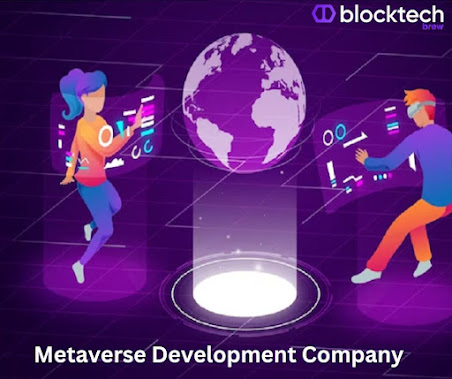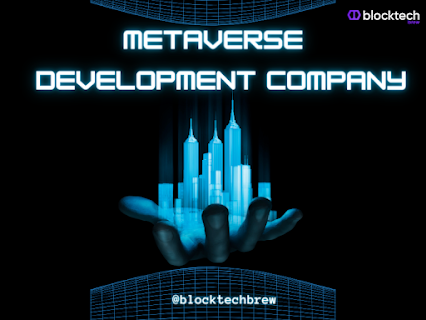Step-by-Step Guide: How to Build a Metaverse App in 2023
The concept of a metaverse has gained significant traction in recent years, with the potential to revolutionize the way we interact with digital environments. A metaverse app can create immersive experiences, allowing users to explore virtual worlds, interact with other users, and engage in various activities. In this blog, we will guide you through the steps to build a metaverse app in 2023, leveraging the latest technologies and trends.
Step 1: Define your Vision: Before diving into the technical aspects, it's essential to define your vision for the metaverse app. Consider the target audience, the purpose of the app, and the core features you want to incorporate. Are you aiming for a gaming-focused metaverse, a social platform, or a combination of both? Understanding your goals will help shape your development process.
Step 2: Choose the Right Technologies: Building a metaverse app requires a robust tech stack. Consider the following technologies:
- 3D Engine: Select a powerful 3D engine like Unity or Unreal Engine, which provide extensive capabilities for building immersive virtual environments.
- Networking: Choose a networking framework or library like Photon or Mirror that enables real-time multiplayer interactions and synchronization between users.
- Blockchain Integration: Consider incorporating blockchain technology to enable secure and decentralized transactions, asset ownership, and interoperability. Ethereum, Binance Smart Chain, or Solana are popular choices.
- Cloud Infrastructure: Leverage cloud computing platforms such as Amazon Web Services (AWS) or Google Cloud Platform (GCP) to ensure scalability and reliability for handling user traffic and data storage.
Step 3: Design the Virtual Environment :
Create a captivating virtual environment that aligns with your app's purpose. Design visually appealing 3D assets, including landscapes, buildings, avatars, and objects. Ensure seamless navigation and intuitive user interfaces (UI) to enhance the user experience. Collaborate with skilled 3D artists, UI/UX designers, and level designers to bring your vision to life.
Step 4: Implement Networking and Multiplayer Functionality:
Integrate the chosen networking framework to enable real-time multiplayer interactions. Develop features such as chat systems, friend lists, private and public spaces, and matchmaking functionalities. Implement protocols for user authentication, privacy, and security to protect user data within the metaverse.
Step 5: Enable Avatar Customization: Allow users to customize their avatars to enhance personalization and self-expression. Provide options for modifying appearance, clothing, accessories, and unique features. Consider incorporating non-fungible tokens (NFTs) to enable the ownership and trading of virtual assets, including rare or limited-edition items.
Step 6: Integrate Social Features: Facilitate social interactions within the metaverse by integrating features like chat, voice communication, and social media integration. Enable users to connect with friends, form communities, join events, and share experiences. Implement moderation tools to ensure a safe and inclusive environment for all users.
Step 7: Implement Gaming Mechanics and Activities:
If your metaverse app leans towards gaming, develop engaging mechanics and activities to keep users entertained. Incorporate quests, challenges, mini-games, and rewards systems to foster a sense of progression and achievement. Consider integrating virtual economies, allowing users to buy, sell, and trade virtual goods and assets.
Step 8: Continuously Update and Improve Building a metaverse app is an ongoing process. Collect user feedback, analyze usage patterns, and identify areas for improvement. Regularly release updates, bug fixes, and new features to keep the app fresh and exciting. Stay informed about emerging technologies and trends in the metaverse space to remain competitive and adapt to changing user preferences.
Conclusion
The metaverse represents the future of digital experiences, offering boundless possibilities for users to explore, connect, and create. By following the steps outlined in this guide, you can embark on the journey of building your own metaverse app in 2023.
Remember to define your vision, choose the right technologies, design a captivating virtual environment, implement networking and multiplayer functionality, enable avatar customization, integrate social features, implement gaming mechanics and activities, and continuously update and improve your app.
As you delve into the metaverse development process, keep in mind that user engagement, community building, and a seamless user experience are paramount. Embrace the collaborative nature of the metaverse and foster a vibrant community that contributes to the growth and evolution of your app.
Additionally, keep an eye on the evolving metaverse landscape, as new technologies and trends continue to emerge. Stay updated with advancements in augmented reality (AR), virtual reality (VR), artificial intelligence (AI), and blockchain, as they may present exciting opportunities to enhance your metaverse app development in the future.
Building a metaverse app requires a multidisciplinary approach, combining technical expertise, creative design, and a deep understanding of user needs and preferences. So, gather a talented team, embrace innovation, and embark on the exciting journey of creating a metaverse app that captivates users and defines the digital experiences of tomorrow.
The metaverse awaits your creative vision—step into the realm of endless possibilities and shape the future of digital interaction.
Why Hire Metaverse Developers From Blocktech Brew?
Trust your metaverse project idea to the best metaverse app development company. From metaverse ideation to development and launch, we assist businesses at every step to accelerate their metaverse development process. We are your metaverse wizards with magic potions of state-of-the-art technologies like AR, VR, MR and Edge Computing, 3D modelling and more to build you a robust metaverse app.




Comments
Post a Comment